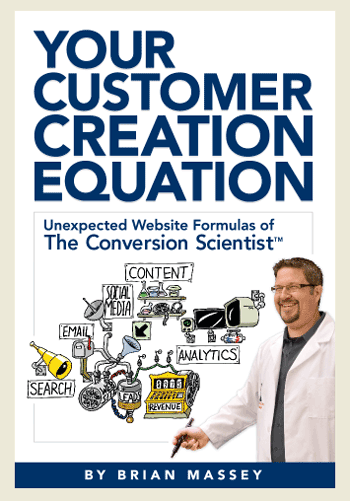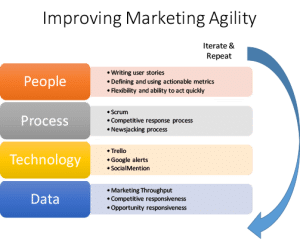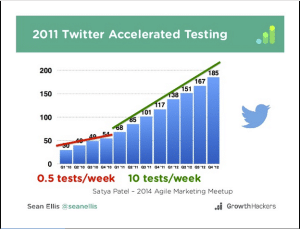 I just finished reading Brian Massey’s Your Customer Creation Equation and I liked it and recommend it, but not for the reasons I expected.
I just finished reading Brian Massey’s Your Customer Creation Equation and I liked it and recommend it, but not for the reasons I expected.
The Conversion Scientist
I was pre-disposed to like this book. On the cover, Brian Massey refers to himself as “The Conversion Scientist” and he has the lab coat to prove it.
If you’ve been following this blog, you know that I’m a big fan of the scientific method and it’s a big part of Agile Marketing. Chapter 1 doesn’t disappoint, as it covers the application of the scientific method to converting visitors to leads and leads to customers and advocates.
Chapter 2, on setting up a digital conversion laboratory, was somewhat underwhelming. Only 8 pages in length, it should be the beating heart of the book, but it lacks instructions or much in the way of specifics on how to set up a laboratory using Google Analytics or similar tools. This is partially remedied by chapter 5, Catching Conversions, and by the list of tools at myconversionlab.com, but I left both chapters frustrated with a lack of examples and specific recommendations.
What Kind of Website Should You Be Running?
Chapter 3 provided the most valuable advice and insights in the book. Massey defines five different kinds of websites and helps you choose which one is right for you. Later chapters make recommendations for conversion strategies based on this taxonomy.
Massey’s five types of websites include:
- The brochure site
- The publication
- The online store
- The consultative site
- The online service
Conversions, Conversions, Conversions
The chapters that follow outline best practices for each specific type of site in areas like conversions (chapters 4& 5), content marketing (chapters 6 & 7), landing pages (chapter 8), shopping carts (chapter 9), home pages (chapter 10) and social media (chapter 11). The material leans towards conversion strategies once someone comes to the site, rather than traffic generation strategies to get someone to the site in the first place. That’s fine, and helpful.
The final chapter, titled “Advanced curriculum in visitor studies”, has some valuable material that couldn’t fit anywhere else in the book.
Lies, Damn Lies and Titles
The book could more accurately be titled “Conversion Strategies and a Few Tips”. The book contained few, if any, formulas or equations in terms of specific instructions: do this, do that, and the output will be newly created customers.
Here are some of his “unexpected formulas”:
- Unexpected formula #1: Your opinion doesn’t matter
- Unexpected formula #2: Your visitors don’t care about your company or your products
- Unexpected formula #3: Your visitors will tell you exactly what to do
These aren’t formulas. Observations or principles, but not formulas. Of course, it’s tough. Every business is different. What works for one site, for one brand, may not work for another. But a few more examples and a few more checklists or specific formulas to follow would have delivered on the promise of the title.
That criticism aside, I enjoyed the book and picked up some valuable tips. For more information, check out the book’s web site, customercreationequation.com.



